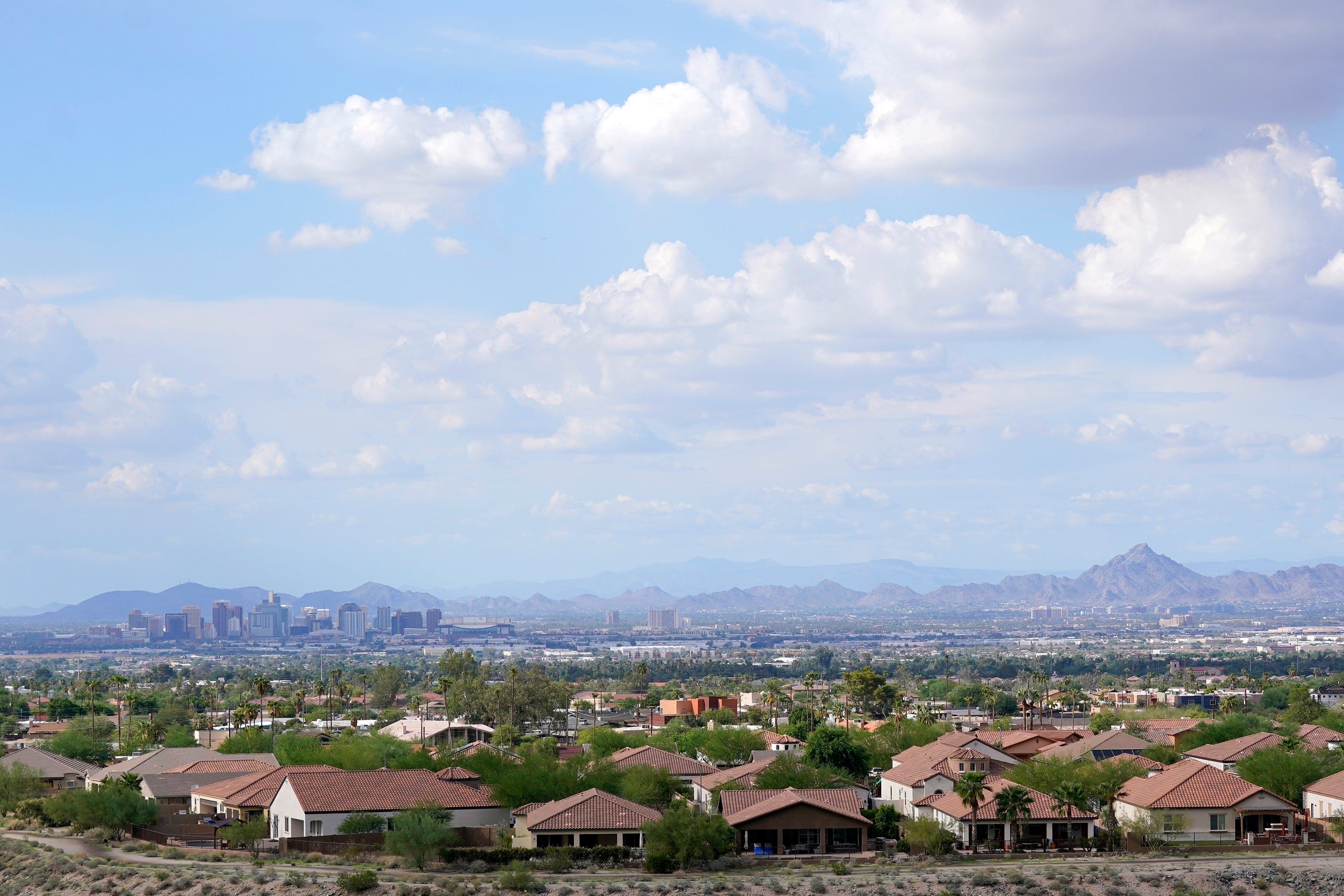Arizona county had largest white, Black, Hispanic growth
Metro Phoenix’s Maricopa County had among the biggest growth in white, Black and Hispanic residents last year, as well as the biggest increase overall of any U.S. county

Your support helps us to tell the story
From reproductive rights to climate change to Big Tech, The Independent is on the ground when the story is developing. Whether it's investigating the financials of Elon Musk's pro-Trump PAC or producing our latest documentary, 'The A Word', which shines a light on the American women fighting for reproductive rights, we know how important it is to parse out the facts from the messaging.
At such a critical moment in US history, we need reporters on the ground. Your donation allows us to keep sending journalists to speak to both sides of the story.
The Independent is trusted by Americans across the entire political spectrum. And unlike many other quality news outlets, we choose not to lock Americans out of our reporting and analysis with paywalls. We believe quality journalism should be available to everyone, paid for by those who can afford it.
Your support makes all the difference.Metro Phoenix's Maricopa County had among the biggest population growth in white, Black and Hispanic residents last year, as well as the biggest increase overall of any U.S. county, while Riverside and San Bernardino counties in California's Inland Empire had some of the largest jumps in Hispanic residents, according to population estimates released Thursday.
Fort Bend County in metro Houston, Maricopa County and Tarrant County, home to Fort Worth, Texas, had the largest county-level growth in Black residents. Asian resident increases were largest in metro Dallas, Southern California's Orange County and metro Seattle's King County, according to 2021 estimates released by the U.S. Census Bureau.
California's Riverside County; Lee County, Florida, home to Fort Myers; and Utah County, home to Provo, Utah; also had some of the largest growth in white residents last year.
The bureau earlier this year released estimates showing where population growth and decline took place in the U.S. from July 1, 2020, to July 1, 2021, capturing the first full year of the coronavirus pandemic. The data released Thursday fill in the demographic details on these changes which saw growth in Sunbelt destinations at the expense of some of the nation’s biggest, most densely-populated and costly metropolitan areas.
Eight of the 10 largest cities in the U.S. lost population during the first year of the pandemic, with New York, Los Angeles and Chicago leading the way. The counties at the heart of those cities, Los Angeles, New York and Cook counties, also lost the most residents from mid-2020 to mid-2021, according to Thursday's estimates.
The biggest decline in Black residents was in Kings County, New York, which has the same boundaries as Brooklyn. The biggest declines of white, Asian and Hispanic residents were in Los Angeles County, which is the most populous county in the U.S. with 9.8 million residents.
An analysis by the Census Bureau released Thursday said the reason for the declines in the central counties of these large metro areas was due to the flight of young adults in their early 20s to mid-30s during the first year of the pandemic since they were able to work remotely in lower-cost areas with other quality of life improvements.
“These patterns indicate that although young working-age adults are leaving the central counties of these large metro areas, they are simply relocating to other areas in the country," said the analysis by Census Bureau demographer Catherine Doren.
Maricopa County's leading pace of growth last year extended its breakneck population gains, as Phoenix was the fastest-growing big city in the United States between 2010 and 2020, according to the 2020 census. The estimates released Thursday capture a time early in the pandemic and don’t reflect changes since last summer.
From mid-2020 to mid-2021, the U.S. grew by 392,665 residents, and the U.S. population now stands at 331.8 million residents. During that time, the white population declined by 79,836 people, the only race or ethnic group to do so, because of deaths outpacing births. It was even more pronounced for whites who aren't Hispanic, with a 878,693-person dip.
The Black population increased by 326,893 people, primarily through the natural increase of births outpacing deaths, and the Asian population rose by 281,167 people, also primarily by natural increase. The Hispanic population grew by 767,907 people, with natural increase being the main driver.
Immigration played a much smaller role than natural increase in U.S. population growth over the year, with almost 105,000 white immigrants, more than 89,500 Asian immigrants, more than 82,000 Hispanic immigrants and more than 53,000 Black immigrants.
Meanwhile, the median age in the U.S. reached 38.8, a gain of 0.3 years last year and a jump of 3.4 years in the past two decades.
“The baby boomers aging is what is causing that increase in median age," said Allison Plyer, chief demographer at The Data Center in New Orleans.
___
Follow Mike Schneider on Twitter at https://twitter.com/MikeSchneiderAP.